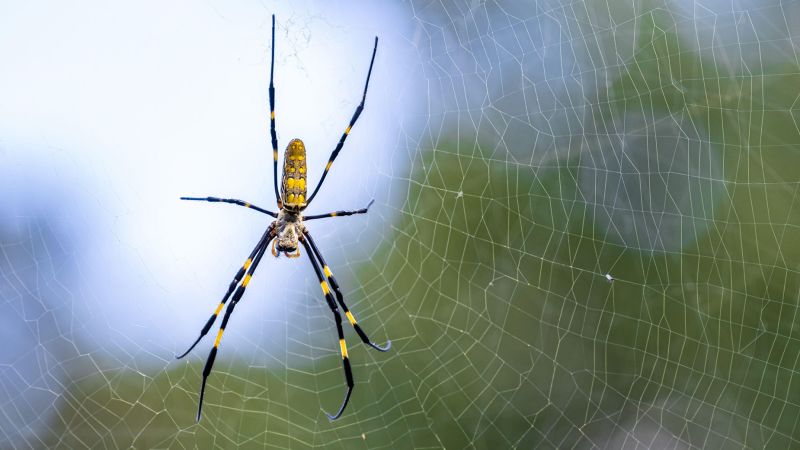
Invasive Jorō spider is surprisingly tolerant of busy urban settings, according to new study
CNN
The invasive Jorō spider has baffled researchers by living near busy roads and urban places that other creatures tend to avoid. A new study might explain why.
As the Jorō spider continues to spread across the southeastern United States, its spindly homes can be spotted almost anywhere — even on power lines and stoplights hovering over busy roads. Typical spiders — and most creatures — tend to find the noise and wind disturbance from nearby busy roads to be too stressful, but the Jorō spider doesn’t seem to mind much, according to a new study published in Arthropoda on February 13. This research could explain why the spiders are regularly spotted in urban areas that native spiders don’t inhabit and suggests the creatures are well-suited to thrive and spread in similar locations throughout the United States. “If you ever look at a spiderweb next to a road, they’re jiggling and shaking, and it’s a cacophony of stimuli. … Roadsides are a really harsh place for an animal to live. But Jorōs seem to be able to live next to them,” said lead study author Andy Davis, a research scientist at the University of Georgia’s Odum School of Ecology. “It’s kind of unfortunate for us here in the US — it so happened to be the place where the spider got deposited about 10 years ago, and it just so happens that the (spider) that got dumped here is one that can do really well with humans.” Jorō spiders, or Trichonephila clavata, were first spotted in the United States around 2013, according to a University of Georgia news release. The creatures — which grow up to 4 inches (10 centimeters) in length, about the size of the palm of a human hand — have since spread rapidly across the southeastern states. Classified as orb weavers, the spiders catch prey using their giant, three-dimensional webs. The Jorō will sit in the middle of the web and wait to feel a vibration, signifying that an insect has been caught in the sticky trap, allowing the spider to rush down and capture it.

The governments of Mexico and the United States signed a memorandum of understanding on Thursday to fund and expedite several wastewater treatment projects in the Tijuana River basin. Untreated wastewater continually affects residents living along the river, which flows across the border from Tijuana and through several of San Diego’s southern neighborhoods.





















 Run 3 Space | Play Space Running Game
Run 3 Space | Play Space Running Game Traffic Jam 3D | Online Racing Game
Traffic Jam 3D | Online Racing Game Duck Hunt | Play Old Classic Game
Duck Hunt | Play Old Classic Game










